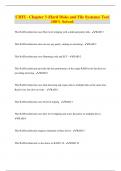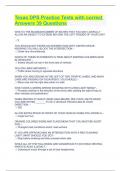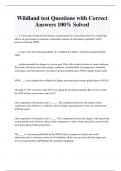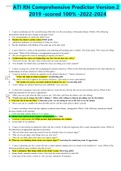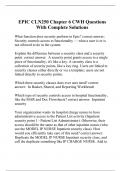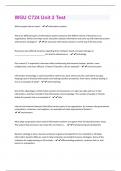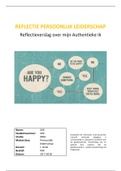Week 1
1. Hayes, J. (2014). The theory and practice of change management. Asingstoke, Hampshire :
Palgrave Macmillan (Chapter 1: Managing change: a process perspective)
2. Kotter, J. P. (1995). Leading change, Why transformation efforts fail. Harvard Business Review, 73,
59–67.
Week 2
3. Stouten, J., Rousseau, D. M., & De Cremer, D. (2018). Successful organizational change:
Integrating the management practice and scholarly literatures. Academy of management Annals,
12(2), 752-788. Ford, J. D.,
4. Ford, L. W., & D'Amelio, A. (2008). Resistance to change: The rest of the story. Academy of
Management Review, 33(2), 362-377.
5. Choi, M. (2011). Employees' attitudes toward organizational change: A literature review. Human
Resource Management, 50(4), 479-500.
Week 3
6. Oreg, S., & van Dam, K. (2009). Organisational justice in the context of organisational change.
Netherlands Journal of Psychology, 65(4), 127-135.
7. Bommer, W. H., Rich, G. A., & Rubin, R. S. (2005). Changing attitudes about change: Longitudinal
effects of transformational leader behavior on employee cynicism about organizational change.
Journal of Organizational Behavior, 26(7), 733-753.
8. Venus, M., Stam, D., & Van Knippenberg, D. (2019). Visions of change as visions of continuity.
Academy of Management Journal, 62(3), 667-690.
Week 4
9. Heyden, M. L., Fourn´e, S. P., Koene, B. A., Werkman, R., & Ansari, S. S. (2017). Rethinking ‘top-
down’ and ‘bottomup’ roles of top and middle managers in organizational change: Implications
for employee support. Journal of Management Studies, 54: 961–985.
10. Mowbray, P. K., Wilkinson, A., & Tse, H. H. M. (2015). An Integrative Review of Employee Voice:
Identifying a Common Conceptualization and Research Agenda. International Journal of
Management Reviews, 17(3), 382-400.
Week 5
Cameron, K., & Quinn, R.E. (2011). Diagnosing and Changing Organizational Culture: Based on the
Competing Values Framework. Wiley
11. Chapter 3: The Competing Values Framework
12. Chapter 5: Using the Framework to Diagnose and Change Organizational Culture
1
,Week 1 Lecture: Introduction to Organizational Change and Change Management
What is organizational change?
“The event in which something appears to become, or turn into, something else”
“One of the greatest themes in the social sciences”
70% of Change Management Initiatives Fail:
- McKinsey and Company: “A recent survey of business executives indicates that the percent of
change programs that are a success today is… still 30%.”
- IBM: “Nearly 60 percent of projects aimed at achieving business change do not fully meet
their objectives.”
- Harvard Business Review: “The brutal fact is that about 70% of all change initiatives fail.”
- Forbes/Towers Watson: “A new study by Towers Watson has found that only 25% of change
management initiatives are successful over the long term.”
- Connor Partners: “Change practitioners have some culpability for the atrocious 70% failure
rate of change initiatives.
Do 70% of all organizational change initiatives really fail? meaningless question (hard to quantify
change failure, put a number like 70%):
- Fails to acknowledge ongoing change and improvisation.
- Disregards the unique contexts of different change initiatives.
- Fails to acknowledge the multiple accounts……
- Fails to acknowledge the temporal nature of evaluating change outcomes. When you ask or
who you ask?
- Downplays any form of qualitative evaluation of organizational change.
Arguments against the concept of an inherent organizational change failure (success) rate (Hughs,
2011):
- The ambiguities of organizational change
o Privileges espoused change rationales over latent change rationales.
o Ignores the unanticipated outcomes of organizational change.
o Fails to acknowledge ongoing change and improvisation.
- Organizational change as highly context dependent
o Disregards the unique contexts of different change initiatives.
- Perceptions of organizational change outcomes
o Fails to acknowledge the multiple accounts of change outcomes which exist.
- Time and organizational change outcomes
o Fails to acknowledge the temporal nature of evaluating change outcomes.
- The measurability of organizational change outcomes
o Downplays any form of qualitative evaluation of organizational change.
2
,Forces of organizational change
External Forces Internal Forces
Political New technology
Technological New people (in key positions)
Cultural Pressure to modify administrative structures
Demographic
Economic (incl market)
Making sense of change drivers
“It seems more common for organizational changes to follow fashions and trends. The eagerness
among managers to benchmark towards what they perceive others, do might explain the common
trend among organizations to adopt whatever change programme is advanced by business schools,
consultants or pop-management writers”
The scale of change
The source of change
- Emergent
- Planned
The politics of change
- Organizational change has a political dimension.
- Based on its scale and intensity, different levels of participation, negotiation and resistance
are involved.
- Organizational change is inherently linked to the opportunity to advance interests as
legitimate in the eyes of (significant) others (via tolerance or acceptance).
The content of change
3
, Change as a sequential process
Organizational change involves a number of events, decisions and behaviors that are conected in a
sequence.
Teleological perspective: organizations are purposeful and adaptive, and present change as an
unfolding cycle of goal formulation, implementation, evaluation and learning.
Dialectical perspective: focus on conflicting goals between different interest groups and explain
stability and change in terms of confrontation and the balance of power between the opposing
entities.
Reactive sequences: organizational change –quite naturally – has a great potential to trigger goal
conflicts between those involved in the change situation. In reactive sequences, subsequent events
challenge rather than reinforce earlier events.
Self-reinforcing sequences: occur when a decision or action produces positive feedback that
reinforces earlier events and supports the direction of change. This reinforcement induces further
movement in the same direction. Pitfalls:
1. Increasing returns: Can create a situation where a unit / department /company sticks with a
winning formula too long and fails to respond to new opportunities and threats as they
emerge
2. Psychological commitment to past decisions: Escalation of commitment and Sunk cost bias.
3. Cognitive biases and interpretive frames: Confirmation Bias and Group Think.
Those leading change need to:
- Be able to step back and observe what is going on,
- Including their own and others attitudes and behavior
- Identify critical junctures and subsequent patterns
- And constantly explore alternative ways of acting.
Change as a purposefully constructed, sequential process
Typically, organizational change models specify a sequence of n steps that can be applied across
different interventions to facilitate effective change.
- There are many prescriptive models out there, mostly directed at senior managers and
executives, advising them how to purposefully implement planned organizational change.
- Typically, these models specify a sequence of steps that’s can be applied across different
interventions.
- Some researchers have called this type of practitioner - oriented models “nstep models”
Lewin’s 3-phasemodel: classic framework to think about organizational change as a managerially
planned effort:
1. Unfreezing: establishing a goal and change plan.
2. Transitioning to a new stage: implementing the change.
3. Refreezing: consolidation of the change.
4


